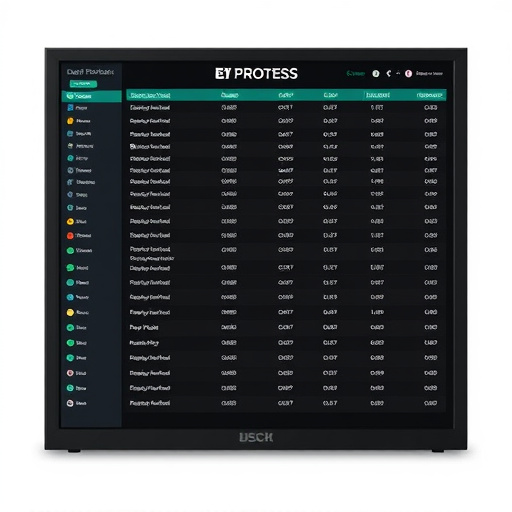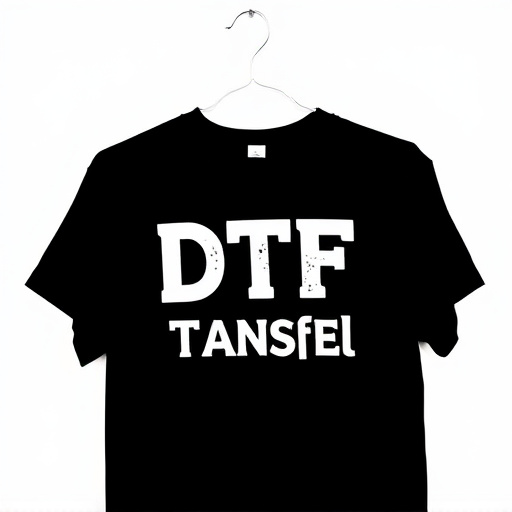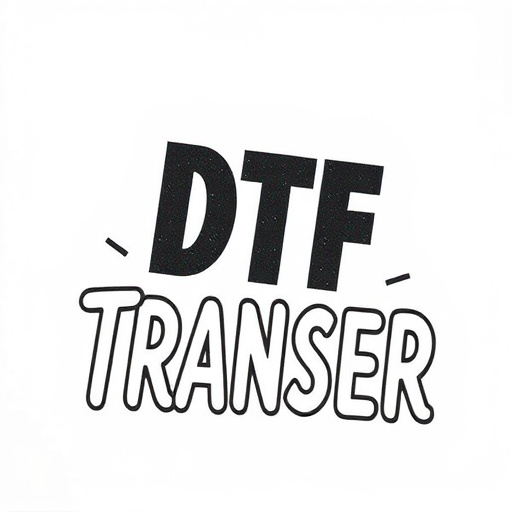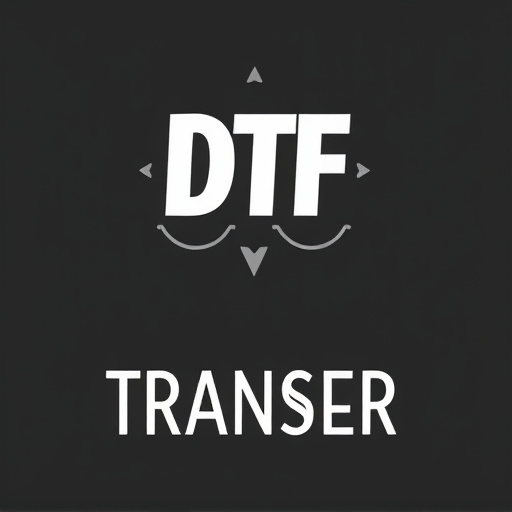Direct-to-Fabric (DTF) printing is revolutionizing apparel production with its swift, versatile, and high-quality custom design capabilities. DTF transfers eliminate complex processes and expensive set-ups, enabling vibrant prints on various fabrics from cotton to synthetics. This technology offers exceptional resolution and color durability, ideal for intricate designs and detailed prints. DTF Transfers have transformed customization in fashion, from limited-edition pieces to mass production, empowering designers and artists with unparalleled versatility. The future of DTF printing looks promising, with trends focusing on sustainability, speed, accuracy, and enhanced color durability.
“Discover the cutting-edge world of DTF Transfers (Direct-to-Fabric) and their revolutionary impact on the apparel industry. This article explores a printing technique that transforms specialty clothing with vibrant, lasting designs. From the benefits of DTF Printing for custom apparel to choosing the right transfers for various fabrics, we delve into the art of maximizing image quality. Uncover diverse applications, from fashion to sportswear, and stay ahead of trends shaping the future of DTF Transfers.”
- Understanding DTF Transfers: A Revolutionary Printing Technique for Specialty Clothing
- The Benefits of DTF (Direct-to-Fabric) Printing for Custom Apparel
- Choosing the Right DTF Transfer: Material Considerations for Different Fabrics
- Design and Image Quality: Maximizing Impact with DTF Prints on Specialty Garments
- Applications of DTF Transfers: From Fashion to Sportswear and Beyond
- The Future of DTF Printing: Trends, Innovations, and Their Impact on the Apparel Industry
Understanding DTF Transfers: A Revolutionary Printing Technique for Specialty Clothing
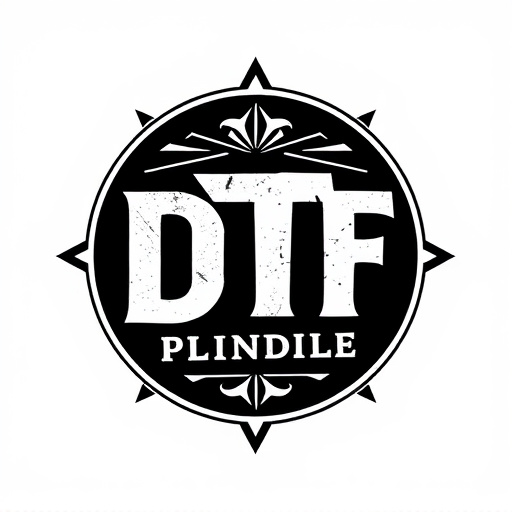
Understanding DTF Transfers: A Revolutionary Printing Technique for Specialty Clothing
DTF (Direct-to-Fabric) transfers represent a groundbreaking advancement in the realm of printing specialty clothing items. This innovative technique allows for precise and vibrant prints directly onto various fabrics, offering unmatched versatility and quality. Unlike traditional printing methods, DTF transfers eliminate the need for costly set-ups and intricate screens, making it an efficient choice for both small-scale and large-batch production. With DTF Printing, complex designs and intricate details can be effortlessly replicated on a wide range of materials, from cotton to polyester.
The process involves applying a special adhesive layer onto the fabric, followed by the placement of a printed film. Heat is then used to bond the print to the fabric, resulting in exceptional clarity and durability. DTF prints offer remarkable colorfastness, ensuring that vibrant hues remain intact even after multiple washes. This printing method has revolutionized the customization of clothing, enabling designers and manufacturers to create unique, on-trend pieces that cater to diverse consumer preferences.
The Benefits of DTF (Direct-to-Fabric) Printing for Custom Apparel

Direct-to-Fabric (DTF) printing offers a game-changing approach to custom apparel, revolutionizing the way specialty clothing items are designed and produced. Unlike traditional methods that often involve multiple steps and restrictions, DTF transfers provide an efficient and versatile solution. With this technique, intricate designs and vibrant prints can be applied directly onto various fabrics without the need for costly set-up costs or limited color palettes. It’s a game-changer for businesses looking to cater to unique customer preferences.
One of the key advantages is its ability to produce high-quality, long-lasting DTF prints on a wide range of materials, from cotton tees to polyester jackets. This versatility ensures that apparel brands can offer customers more options and cater to different fabric choices. Moreover, DTF transfers allow for quick turnaround times, enabling businesses to promptly deliver custom-designed garments. This efficiency is particularly valuable in today’s fast-paced fashion industry, where trends evolve swiftly and consumers demand personalized pieces.
Choosing the Right DTF Transfer: Material Considerations for Different Fabrics

When selecting a DTF (Direct to Fabric) transfer for specialty clothing items, understanding material considerations is paramount. Different fabrics have unique properties that influence the quality and longevity of the DTF Transfer and DTF prints. For instance, natural fibers like cotton and linen absorb ink differently compared to synthetic materials such as polyester or nylon. Cotton garments offer a porous surface ideal for DTF Printing, allowing inks to penetrate deeply, resulting in vibrant, long-lasting designs. In contrast, synthetics may require specialized inks and techniques to achieve optimal adhesion due to their smoother, less porous nature.
Additionally, the stretch and flexibility of the fabric play a role. Stretchy fabrics like spandex or lycra present unique challenges for DTF Transfer, as the design must conform to the material’s movement without cracking or peeling. Specialty inks and heat-application methods are often employed to ensure adhesion in these cases. On the other hand, rigid or structured fabrics like denim or canvas may require stronger adhesives or pre-treatment to prepare the surface for printing, ensuring a durable finish that withstands regular wear and tear.
Design and Image Quality: Maximizing Impact with DTF Prints on Specialty Garments
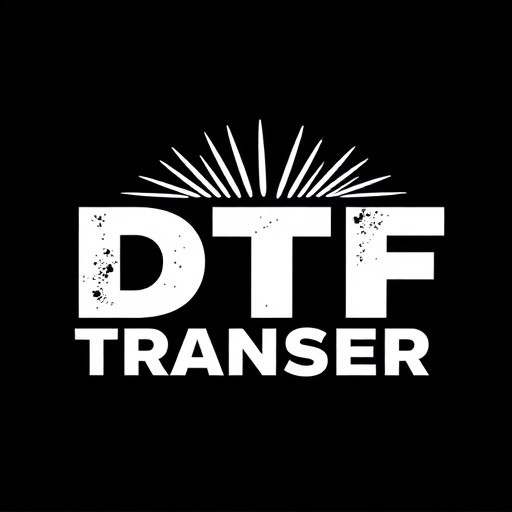
Design and Image Quality: Maximizing Impact with DTF Prints on Specialty Garments
When it comes to specialty clothing items, the design and image quality of transfers play a pivotal role in capturing attention and conveying messages effectively. Digital Thermal Transfer (DTF) printing has emerged as a game-changer in this space, offering superior resolution and vibrant colors that rival traditional methods. DTF Transfers are specifically designed for intricate details and complex artwork, ensuring every element is crisp and clear when applied to various fabrics.
This advanced printing technique enables the production of high-quality DTF Prints, making them ideal for custom apparel, promotional wear, and even artistic garments. By utilizing DTF Technology, designers can achieve remarkable results, from bold graphics to delicate illustrations. The process involves transferring inks directly onto the garment’s surface, resulting in a durable and long-lasting finish that retains its vibrancy even after multiple washes.
Applications of DTF Transfers: From Fashion to Sportswear and Beyond

DTF Transfers have revolutionized the way we adorn and personalize specialty clothing items, from fashion to sportswear and everything in between. Their versatility allows for intricate designs and detailed prints that were once impossible with traditional printing methods. These transfers are a game-changer for designers and manufacturers alike, enabling them to create unique, limited-edition pieces or mass-produce customized garments at scale.
With DTF Printing, the possibilities are endless. It can be used on various fabrics, allowing brands to cater to diverse markets. Whether it’s a trendy fashion label incorporating logo prints on T-shirts or a sportswear company personalizing jerseys with player names and numbers, DTF Transfers offer a fast, cost-effective solution. This technology has also found its way into the world of art, where artists use DTF prints to showcase their creations on clothing, turning everyday garments into wearable canvases.
The Future of DTF Printing: Trends, Innovations, and Their Impact on the Apparel Industry

The future of DTF (Direct to Fabric) printing is looking bright, with several trends and innovations poised to revolutionize the apparel industry. This technology, which allows for precise and vibrant DTF transfers directly onto various fabric surfaces, has already made waves in specialty clothing sectors. One prominent trend is the shift towards more sustainable practices; eco-friendly inks and materials are gaining traction as consumers become increasingly conscious of environmental impact.
Additionally, advancements in DTF printing technology offer faster production times, improved accuracy, and enhanced color durability. These innovations enable brands to produce custom DTF prints with intricate designs on a variety of fabrics, opening up endless possibilities for creative expression in the apparel space. The ability to personalize garments at scale is set to become a game-changer, catering to diverse consumer preferences and fostering brand loyalty.





